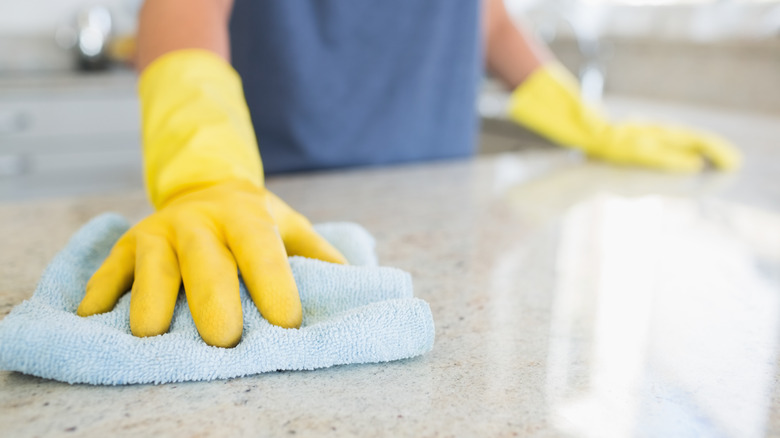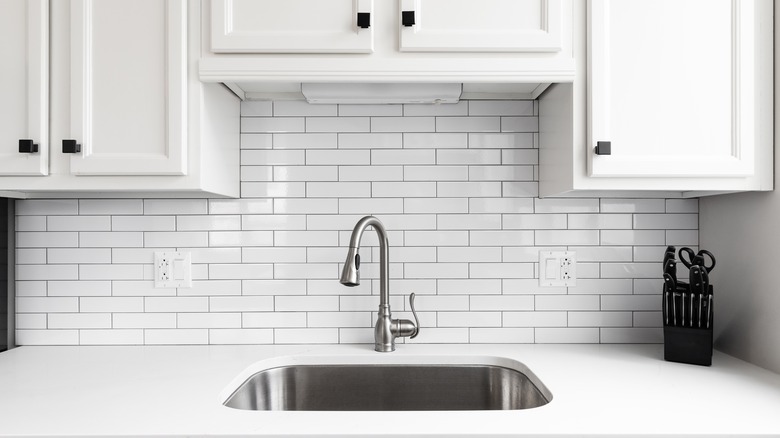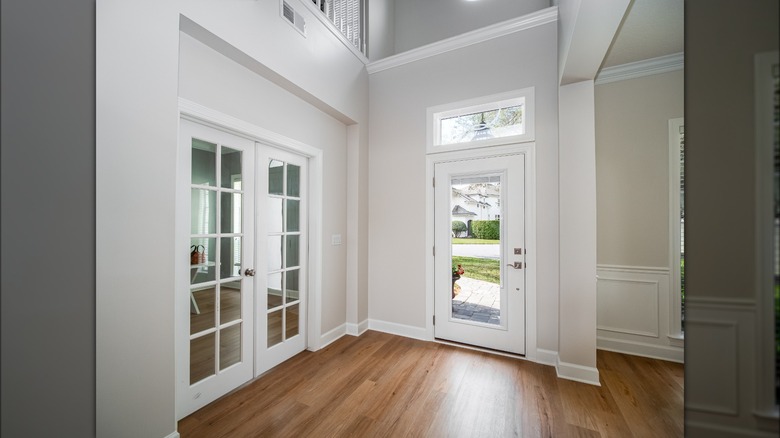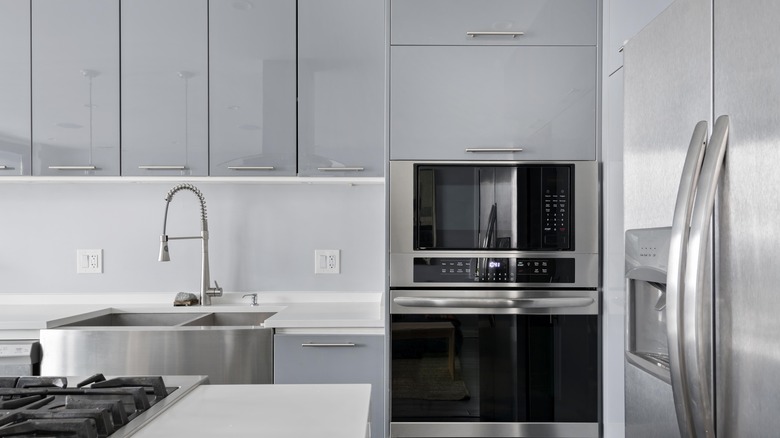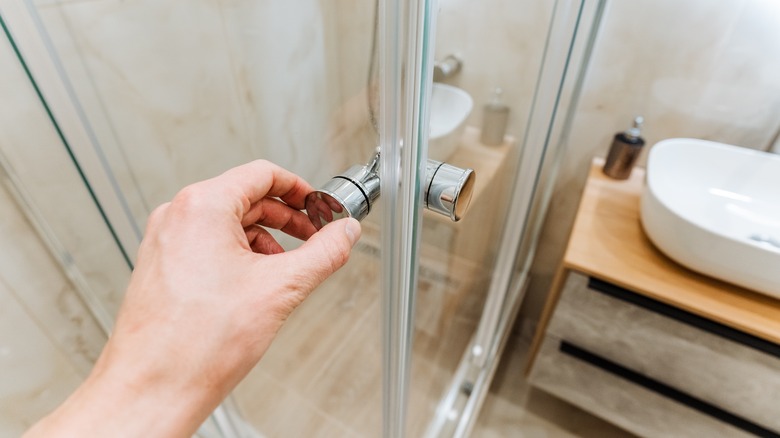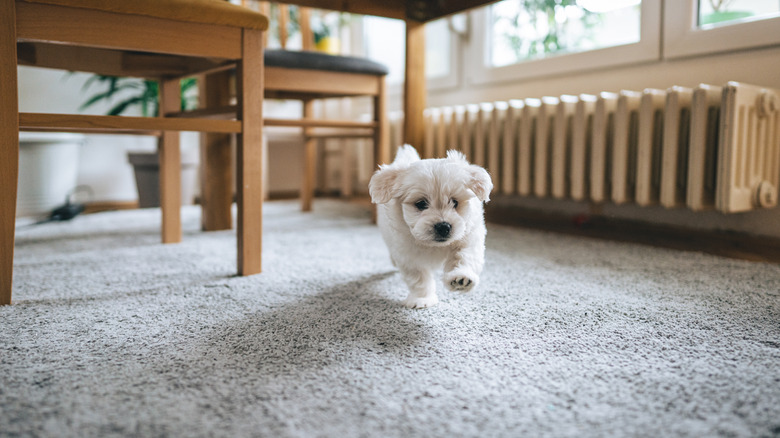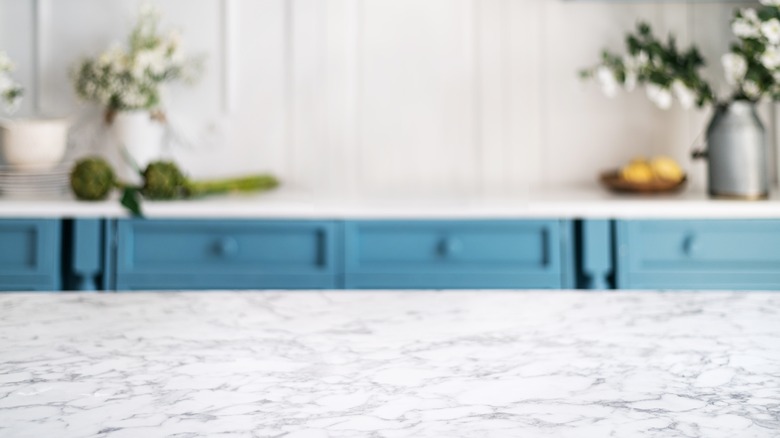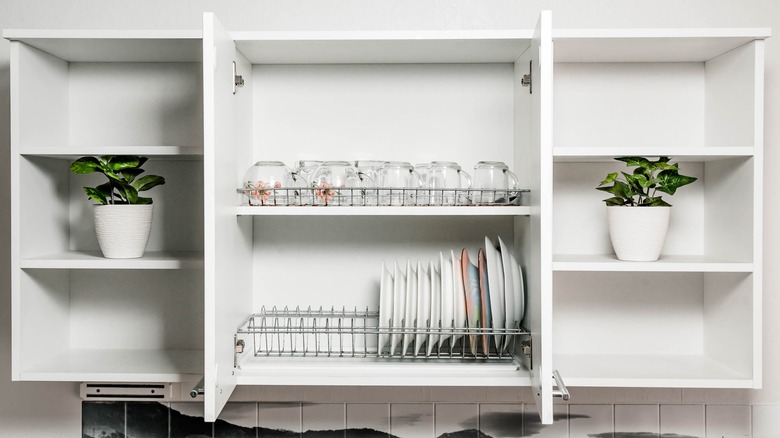Things Our Cleaning Experts Avoid Putting In Their Homes (& What To Use Instead)
It's easy to get wrapped up in the looks of cool design features, but will the reality of keeping them clean be too much for you? Whether it's the latest TikTok home decor trend or even something one of your favorite HGTV stars has in their own home, sometimes what looks good is a nightmare to upkeep. "While there are many design features that look impressive, they may not be the most practical options for your home. Design elements that can easily trap dirt, dust, and bacteria will force you to deep clean more often," Katie Dills, Brand President of The Cleaning Authority, warned House Digest readers in an exclusive interview. "Instead, we recommend opting for design elements that will stay clean longer in between your cleaning cycles."
We also spoke with Katie Berry, Cleaning Expert, Author, and Founder of Housewife How-Tos about the things cleaning experts avoid putting in their homes. If you are thinking about a redesign and want to know what to avoid, or are struggling keeping something clean and need to know you're not alone — we are here for you. The best part is that our cleaning experts also shared what to use instead, so you can have the stylish (and clean!) home of your dreams.
Be careful about how deep the grooves on your backsplash are
Cooking a big meal and then doing the dishes afterwards can be messy. Grease is known to pop quite far out of the pan and soapy water from the sink can end up everywhere. The number one victim in all this tends to be the backsplash in the kitchen. So, when selecting a material and style, avoid texturing your backsplash as these are difficult to manage. "Textured backsplashes collect dirt and grease from cooking and require deep cleanings more often than a flat design with minimal grout lines," Katie Dills told House Digest. "Select a sleek, flat backsplash design. This will reduce the areas where dirt and grease from cooking can accumulate and simplify the cleaning process."
It is possible to have a pretty backsplash with a design, including fun tiles, or even a chic continuation of your kitchen countertop. The key is keeping it as flat as possible. So, if you want a tiled backsplash, ask your builder (or remind yourself if you're doing it DIY) to fill the grooves with an epoxy resin. This seals the tiles and fills in most of the gaps. This way you don't lose out on your vision, but won't find yourself awkwardly extending over the counter trying to scrub grease out of the grooves for years to come.
Be mindful about decorative spaces in the home
When designing your home, be careful to keep things functional and not too decorative. If you want to have something added just for looks, be sure to think about how you might keep it clean ahead of time. Because, in most cases, they just become receptacles for dust. Some of the worst offenders? "Random ledges like home builders put everywhere in the '90s," Katie Berry said. "Who wants to climb a ladder to dust?" You know the ones — in two story homes they typically sit above the front door just across from the upstairs landing. Instead of leaving the space open to the ceiling, there is a ledge. What is supposed to go there? Many might choose to fill it with seasonal decorations, but, as Berry points out, there is always a ladder involved. It's a lot of work to manage the awkward space.
Yet, these ledges aren't the only things that are difficult to keep clean. If there is anything else that makes keeping your house clean a real chore, it's "millwork on extra tall walls," added Berry. "It's that dust thing again." Instead, opt for an open entryway without a ledge. These ledges typically aren't load-bearing, so you can remove it if you have one. And, if your walls are higher than you can reach with an extended duster, opt for simple crown molding without all the nooks and crannies.
High gloss kitchen cabinets show everything
The kitchen is one of the most-used spaces in the home. It can be the messiest, too, with plenty of sticky ingredients involved daily. Because of this, you can make things easier for yourself by avoiding high gloss kitchen cabinets. If you include them in your house, you will be fighting an uphill battle for a clean kitchen because they show everything. "Between fingerprints and grease, they never look clean. And I personally don't want to see my reflection before having coffee," Katie Berry told House Digest.
Instead, the easiest cabinet material to keep clean is classic hardwood. You can paint it any color you choose, so it's a versatile option. The best part is all you need is a rag and some dust polish to wipe away any grime — which it won't have much of in the first place, meaning you won't have to clean them as often — whereas high gloss cabinets seem to show fingerprints after every use. In addition to cabinet texture, also consider their shape for ease of cleaning. If your cabinet has an inset section with lots of grooves, grime is likely to settle there, too. Any intricate detailing on the cabinet doors will also take more time to dust, as you'll likely need a smaller tool that can attack from every angle. So, the more simple the design, the better.
Complex shower doors with exposed wheels and tracks are magnets for mildew
Most bathrooms are constantly pretty humid due to steamy showers. This makes the space a common place to have problems with mold and mildew. When designing your bathroom, set yourself up for success by giving the grime fewer places to grow. "Shower doors with exposed wheels and rollers mounted to tracks easily collect water that can quickly grow mold and mildew," said Katie Dills. In order to avoid this, you would have to wipe the water out of the track after each shower, which could quickly become annoying.
Instead, you should "opt for frameless glass shower doors that use minimal hardware," advised Dills. "They have fewer nooks and crannies for grime and mildew to accumulate." Instead of a track, frameless doors are hinged to the wall, but their bottom hovers above the floor. There is typically a stone or tile lip on the edge of the shower to keep the water inside. These doors tend to swing in and out instead of sliding. While you will need more space in the bathroom to accommodate for the swing, the trade off for a cleaner room without cleaning mildew from a tiny track is worth it.
Carpets can make keeping your floors clean a hardship
If you live in a high-traffic house with kids and pets, there is one flooring choice our cleaning experts think you should avoid. "Carpets," said Katie Berry. "They're dirt and odor magnets, and fiber degradation adds tot household dust." It's typically more difficult to get smells and stains out of carpet. While you can simply wipe up a pet accident or a spilled drink from most other types of flooring, they tend to fester on carpet or require a significant amount of effort. Carpets also hold onto smells, like sweat and dirt, even after using deodorizer as part of your cleaning routine. To permanently get rid of heavy stink or stains, you need to get your carpets professionally deep cleaned.
If you enjoy carpet, a great compromise is to keep carpet in the home's bedrooms, but chose something else for the rest of the living spaces. Great alternative options for easy-to-clean flooring include LVP (luxury vinyl planks), large format tiles (with shallow grout lines), and even traditional hardwood. If you feel like it is too cold underfoot, you can install radiant floor heating, although the more economical option is a few stylish rugs.
Textured or porous countertops will absorb anything and everything
The hardest countertop materials to keep clean are ones that like to absorb whatever is spilled onto them. For example, travertine is a type of limestone that easily stains. It is very porous and tends to soak up materials quite quickly, leading to deep, permanent marks that you can't scrub out. Marble is also notoriously difficult to keep clean as it also absorb things, especially acidic compounds, which are likely to never fade away. Marble also can etch, which is when the stone starts looking really dull because of things spilled onto it. To keep in top shape, marble requires a lot of work. Tiled countertops tend to trap grime in their grout lines, while stainless steel options are always going to be covered in fingerprints.
So, when selecting a countertop material, what are you supposed to do? "Choose smooth, non-porous surfaces like quartz for kitchen countertops," said Katie Dills. "These materials are less likely to trap bacteria and can easily be wiped clean." When choosing the material of your countertops, be sure to also consider the shape. While a unique edge can look great, it's just giving bacteria a great place to hide. Instead, the more streamlined your countertop edge is, the better.
Open shelf kitchen cabinets are a passing trend
There was a time when you couldn't get away from open shelving in the kitchen. It was everywhere! However, drawbacks of the style seem to outweigh its perks, especially when it comes to keeping the shelves clean. There are a lot of particles swirling in the air throughout the kitchen from all the cooking and cleaning up that happens. If you have open shelving, what's left out gets exposed to this, too. "Choose cabinets with closed doors to prevent dust and grease from settling on your dishes and cookware," said Katie Dills. Nothing is worse than finding your china covered in last week's bacon grease because it sits exposed above the stove.
Yet, many like to see where everything is, as it helps them remember where they keep certain items. If you are an out of sight, out of mind type of cook, Dills has the perfect happy medium for you. "If you still want to have an area in your kitchen that can display some of your favorite dishware, opt for an enclosed display cabinet with a glass front," she shared. While you'll need to wipe down the glass when cleaning your cabinets, this makes sure that what is inside stays a bit cleaner.
